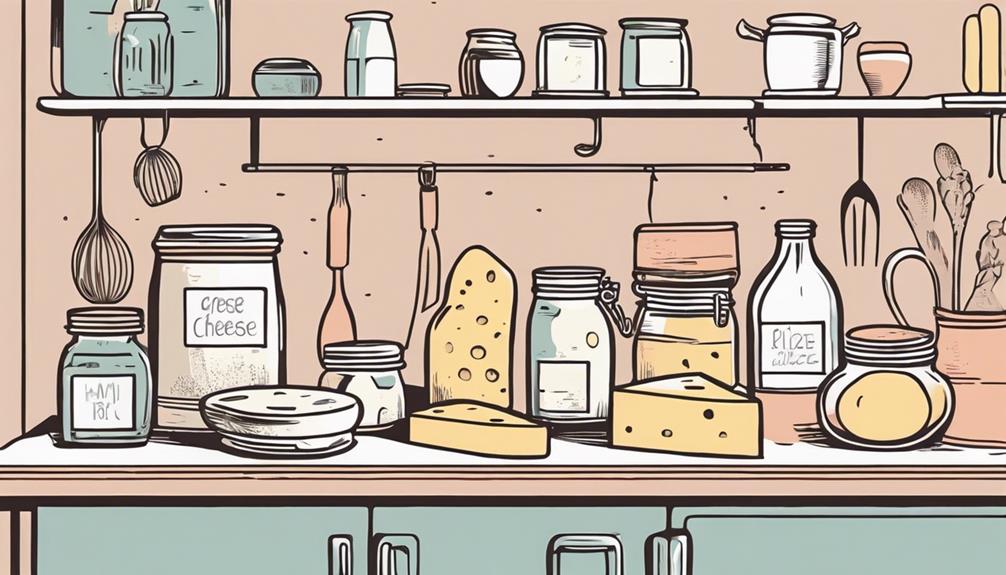How To Become More Self-Sufficient Without Starting a Full-Blown Farm…
Want to start preserving your harvest, making your own soap, or building a backyard root cellar — but not sure where to begin? “Homesteading Advice” gives you instant lifetime access to 35+ practical homesteading books on food preservation, veggie gardening, DIY natural cleaning products (save over $250 per year with this skill alone), brewing, off-grid energy, and a whole lot more…
Click Here To Check It Out Now!
“Hi! I’m getting into cheese making and I’m a bit nervous about handling and storing cheese cultures. I want to make sure I don’t mess things up or get anyone sick. Could you guide me on the best practices for handling and storing cheese cultures safely? I’m in Sydney and want to make sure the local environment doesn’t impact how I should do things.” Thanks, Rebecca, Sydney, Australia.
How Do You Handle And Store Cheese Cultures Safely?
It’s fantastic that you’re venturing into the world of cheese making, Rebecca! Handling and storing cheese cultures properly is incredibly important for ensuring the quality and safety of your cheese. Let me walk you through all the details you need to be confident and successful in your new hobby.
Understanding Cheese Cultures
Cheese cultures are essential in the process of cheese making. They consist of bacteria that help convert milk into cheese by fermenting lactose (milk sugar) into lactic acid, facilitating the curdling process. There are mainly two types of cultures:
- Mesophilic cultures: Ideal for cheese that is produced at lower temperatures.
- Thermophilic cultures: Used for cheeses that require higher temperatures during production.
Why Proper Handling and Storage Are Important
Cheese cultures are living organisms that require proper handling to remain effective. Incorrect storage can lead to contamination, spoilage, and ultimately, a product that is either unsafe to eat or simply not very good. Here’s why it matters:
- Safety: Ensuring the cultures are stored properly minimizes the risk of harmful bacteria contaminating your cheese.
- Quality: Properly stored cultures maintain their strength and efficacy, leading to better cheese.
- Consistency: Consistent storage practices ensure you get the same results every time you make cheese.
Initial Handling of Cheese Cultures
When you first get your cheese cultures, whether they are freeze-dried or liquid, there are a few steps to follow:
- Inspect the Package: Make sure there’s no damage to the packaging which could have compromised the cultures.
- Read Instructions: Follow the manufacturer’s guidelines, as each culture may have specific requirements.
- Use Clean Utensils: Use sterilized tools and keep your hands clean to avoid contaminating the cultures.
Storing Cheese Cultures
Proper storage is the key to extending the life and effectiveness of your cheese cultures. Here’s how to go about it:
Freeze-Dried Cultures
- Temperature: Store in the freezer at -18°C (0°F).
- Packaging: Keep them in their original packaging or in airtight containers to prevent moisture exposure.
- Usage Tips: Thaw the culture just before use and never re-freeze a thawed culture.
Liquid Cultures
- Temperature: Store in the refrigerator at 4°C (~39°F).
- Duration: Generally, liquid cultures have a shorter shelf life compared to freeze-dried, typically lasting a few weeks to a couple of months.
- Handling: Use sterile techniques and equipment when measuring or pouring the cultures to avoid contamination.
Using Cheese Cultures Safely
Here are some practical tips for using your cheese cultures effectively:
Measurement
- Accuracy: Use precise measuring tools. Too much or too little can affect the cheese-making process.
- Caution: Measure what you need and avoid returning any unused quantity back to the main storage to prevent contamination.
Environment
- Cleanliness: Ensure your workspace and utensils are clean and sterile to prevent undue contamination.
- Temperature Control: Maintain recommended culturing temperatures to ensure the bacteria thrive correctly. In your case, Rebecca, even though Sydney can get quite warm, make sure your cheese-making area is well-regulated, perhaps even air-conditioned if necessary.
What Can Go Wrong and How to Fix It
Even with the best intentions, sometimes things might go awry. Here’s what to watch out for and how to address them:
- Weak Culture Activity: If your culture seems inactive, check if it has expired or wasn’t stored properly. Consider using a fresher batch.
- Contamination: If you notice any off smells or strange growths, discard the batch. Ensure your tools and environment are cleaned thoroughly before the next attempt.
- Inconsistent Results: If you’re getting mixed results, it might be down to variations in measurements or temperatures. Keeping a detailed cheese-making log can help identify what’s causing inconsistencies.
Best Practices and Tips
To wrap things up, here are some gold-standard practices to follow:
- Labeling: Always label your cultures with the date of purchase and storage. This will help you keep track of their age and efficacy.
- Regular Checks: Periodically check your storage units to ensure the temperature is consistent and there’s no exposure to moisture.
- Small Batches: If you’re just starting out, working with smaller batches can reduce waste if you make a mistake.
- Stay Informed: Cheese-making is an evolving field. Keep updated with the latest best practices and innovations.
Final Thoughts…
Rebecca, I hope this comprehensive overview gives you the confidence to handle and store your cheese cultures safely. Remember, the right storage and handling practices can significantly influence the quality of your cheese. Keep experimenting and don’t be afraid to make mistakes – they are a part of learning. Thanks for reaching out and happy cheese making!

